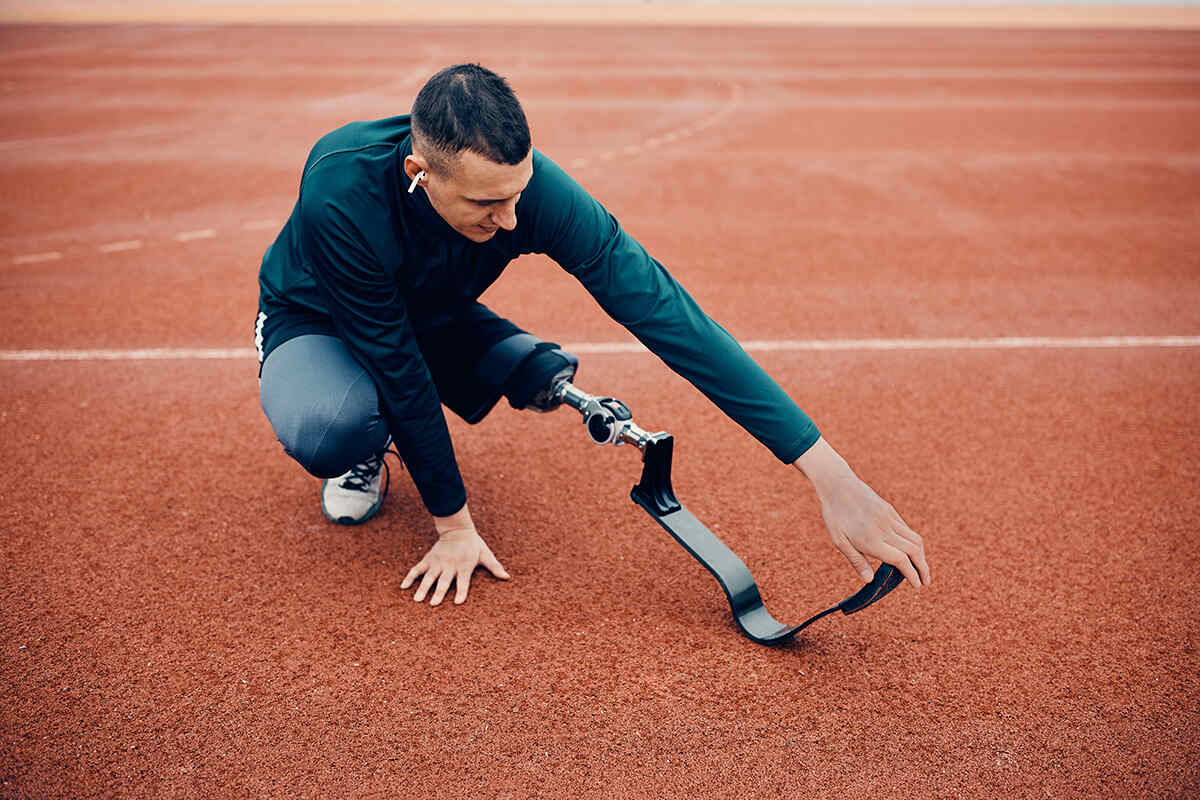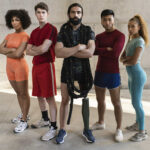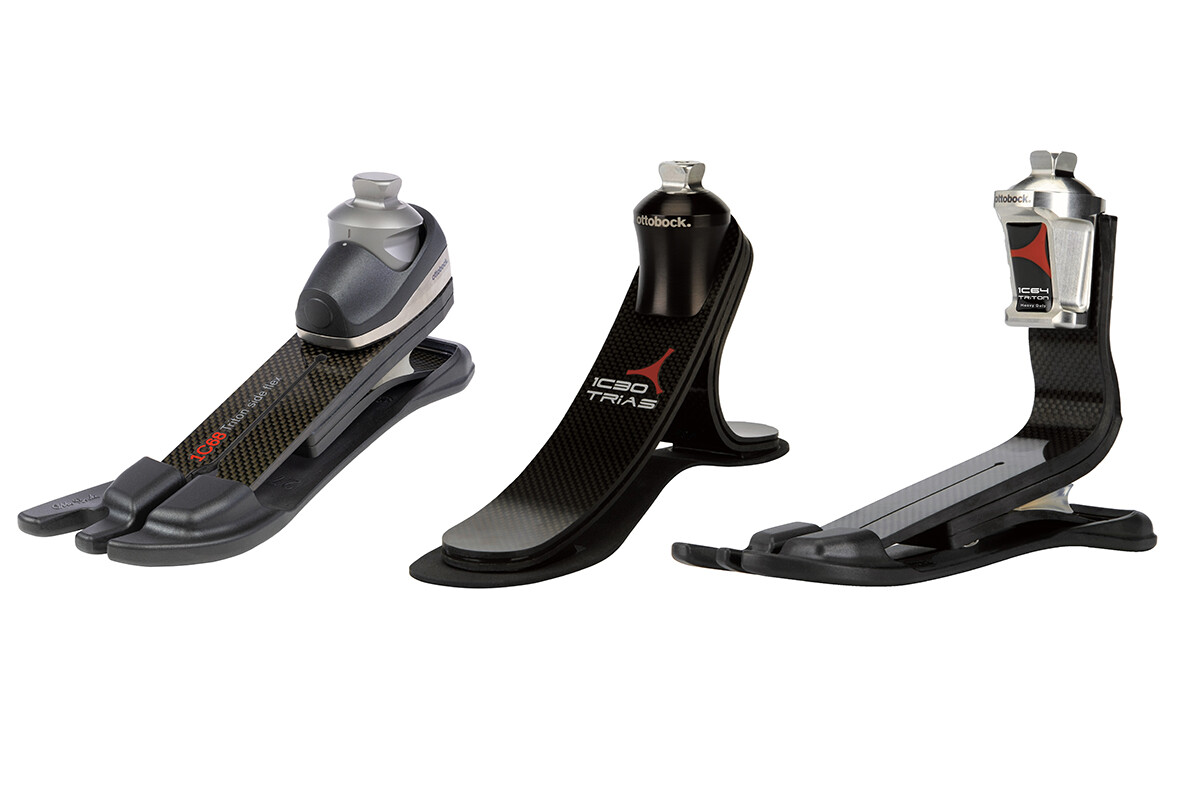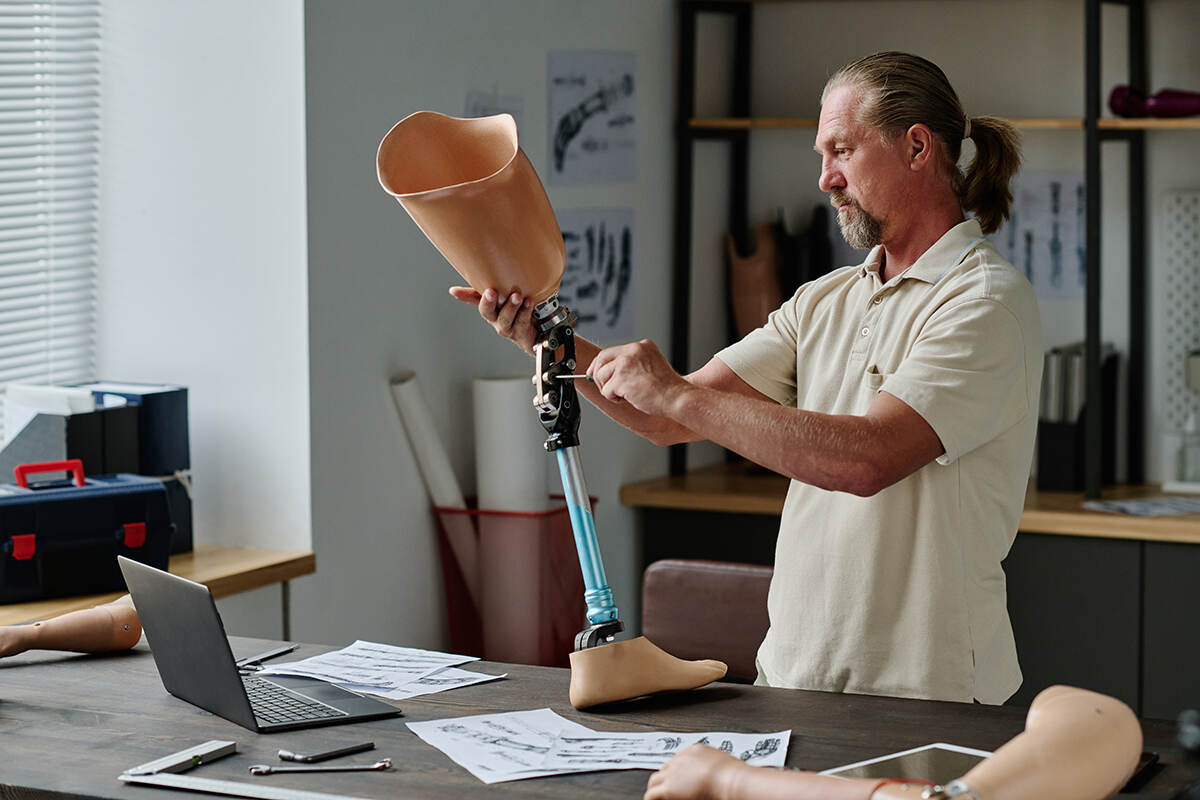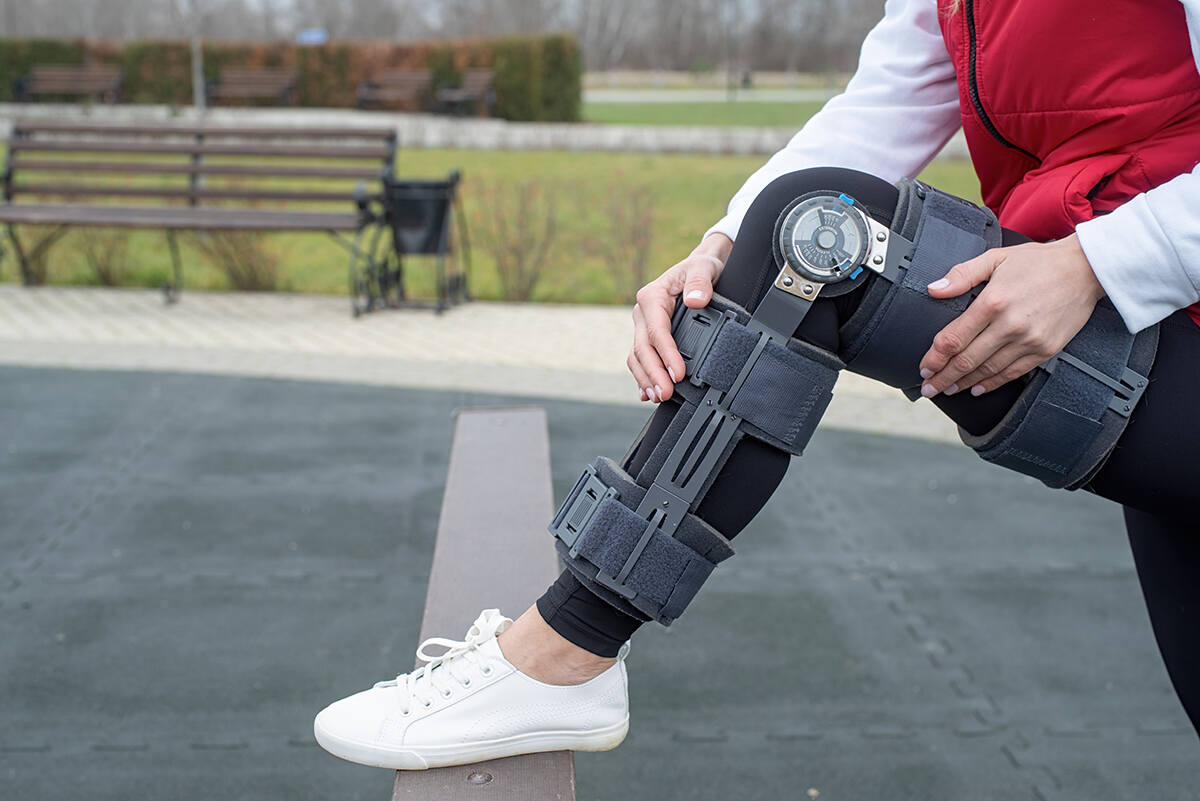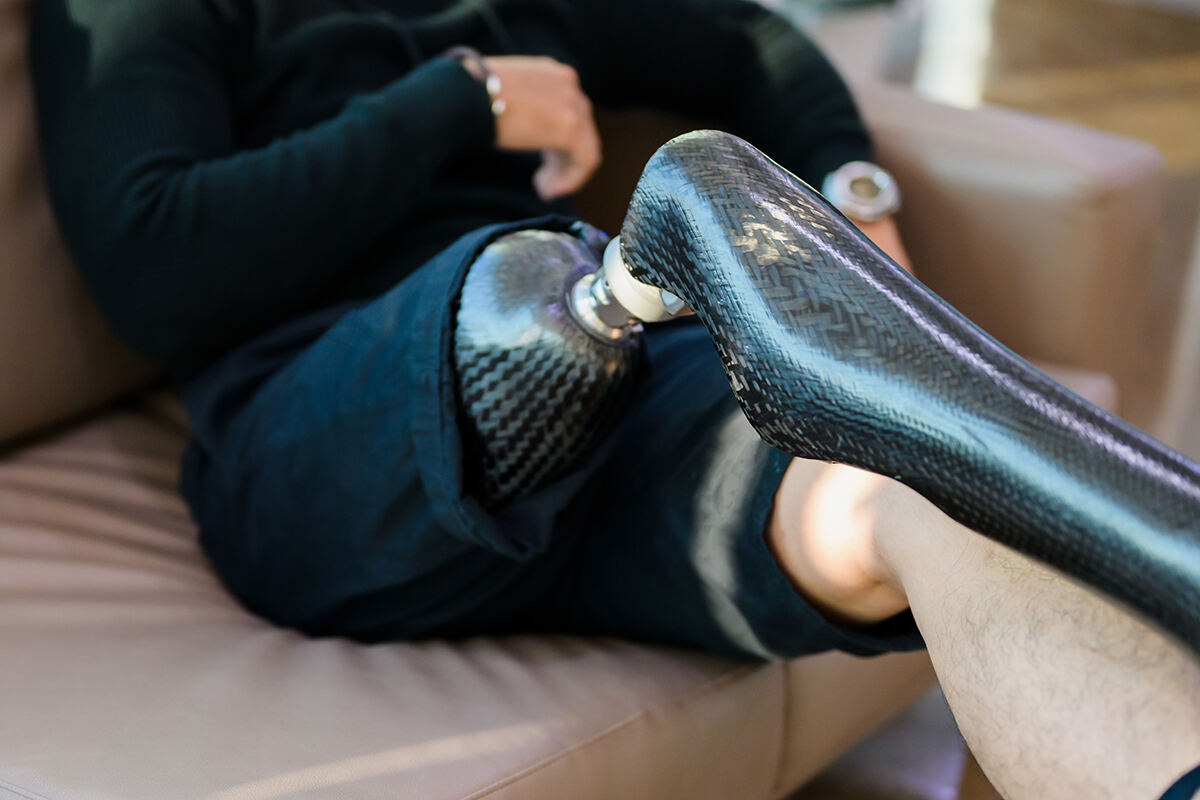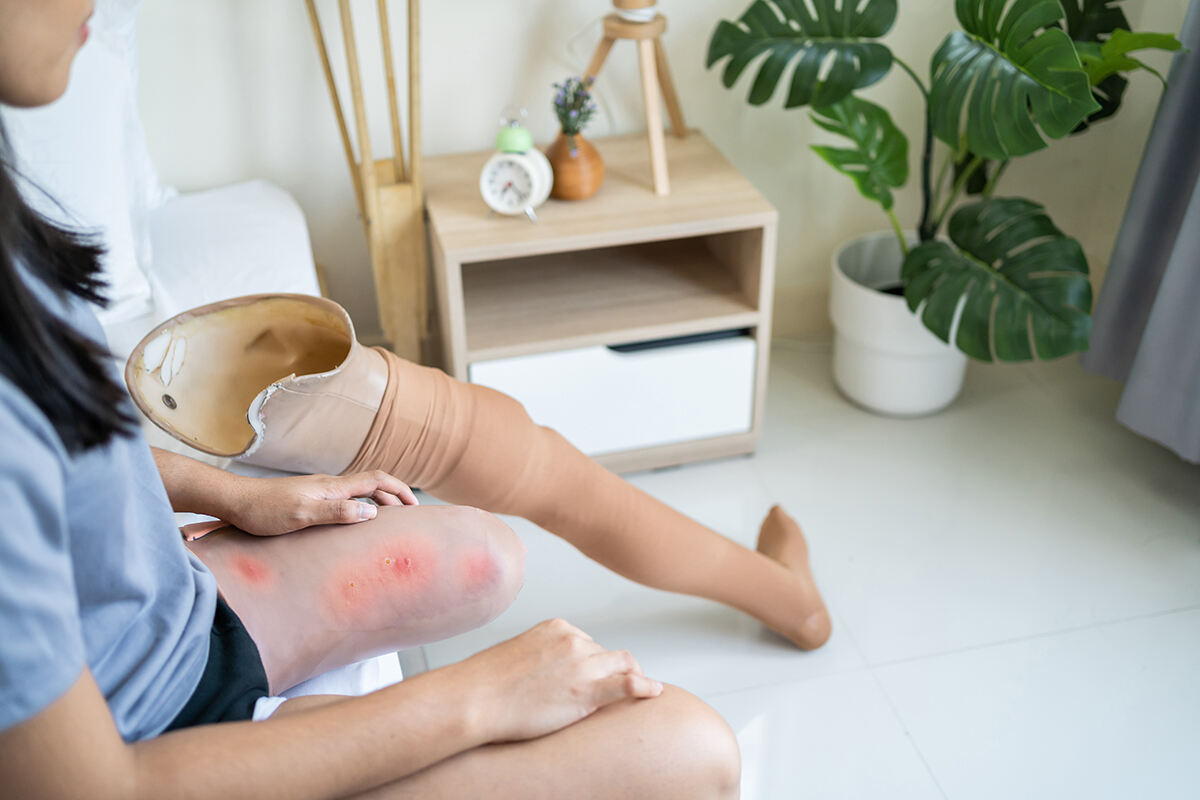Are you an amputee looking for ways to lead an active and dynamic lifestyle? Look no further! There’s a world of adaptive sports waiting for you, offering exciting opportunities to challenge yourself, build strength, and connect with others who share your passion. In this blog post, we’ll explore various amputee sports that cater to amputees, from wheelchair basketball to scuba diving and beyond. Get ready to ignite your inner athlete and embrace the power of adaptability in the world of amputee sport!
Key Takeaways
- Empower yourself with dynamic sports tailored to amputees, from wheelchair basketball and scuba diving to archery and horseback riding!
- Adaptive equipment, training programs & support are available for a safe & fulfilling experience.
- Participate in local or international competitions such as the Paralympics & unlock your full potential!
Embracing the Court: Wheelchair Basketball for Amputees

Wheelchair basketball is a popular sport that offers wheelchair users an exhilarating and competitive experience, combining physical activity with a sense of camaraderie and accomplishment. With modified rules and equipment tailored to accommodate various disabilities, wheelchair basketball is an empowering way for amputees to stay active, have fun, and showcase their skills on the court.
The Game and Rules
So, what sets wheelchair basketball apart from the traditional game? Primarily, players are required to use a wheelchair while the dimensions of the court and the 3-point line remain unchanged. One unique aspect is that players need to dribble or pass the ball after every two pushes of their wheelchair. The excitement remains the same as the objective is to score points by shooting the ball into the opposing team’s basket.
For a detailed understanding of the specific rules of wheelchair basketball for amputees, the International Wheelchair Basketball Federation (IWBF) website is a useful reference. It provides comprehensive information that will equip you for an engaging experience on the court.
Health Benefits
But wheelchair basketball is more than just a game – it’s also a fantastic way to improve your health. Playing this sport can significantly boost your muscle strength, endurance, and cardiovascular fitness, all while decreasing the prevalence of chronic physical disorders.
The mental health benefits are equally impressive. Participating in wheelchair basketball can foster a sense of self-determination, leading to greater productivity, joy, and involvement. It’s a win-win situation – enjoy an exhilarating sport while enhancing your overall health and wellness!
Getting Involved
How might you become a part of the court action? Start by contacting the National Wheelchair Basketball Association (NWBA) for information on forming or joining a team. You might also explore alternative basketball leagues specifically designed for amputees. Eligibility to compete in Paralympic Games and international competitions may vary based on impairment groups, so be sure to check the requirements.
To help ensure a smooth and enjoyable experience, you can also invest in specialized wheelchairs made from high-tech materials like carbon fiber. These chairs are designed to be:
- Strong and lightweight
- Angled wheels for better maneuverability
- Straps for added stability
- Low center of gravity to prevent tipping
- Wider wheelbase for stability
With the right equipment, support, and financial assistance, you’ll be well on your way to becoming a wheelchair basketball star!
Blade Running!
Running is not just a sport for amputees, it’s a journey of resilience and adaptability. Whether it’s the rhythmic cadence of track running or the leisurely pace of a morning jog, each step for an amputee runner symbolizes something more profound than mere physical activity.
The starting line for an amputee runner is marked by careful preparation. A well-fitting prosthesis is the cornerstone of this journey. It’s not just about having a prosthetic limb; it’s about ensuring that it fits perfectly to maintain an efficient running gait, crucial to avoid potential injuries. This attention to detail extends to skin care as well, as the resilience of the skin around the residual limb plays a vital role in comfortably sustaining the impact of running.
Building-blocks
Building endurance and agility forms the next phase of preparation. Amputees, who naturally expend more energy while moving, benefit from activities like cycling, using an elliptical machine, or brisk walking. These exercises are not just about physical conditioning; they are also about nurturing balance and agility, essential for stability and injury prevention.
The real test begins with the first run. Veteran amputee runners often advise starting with realistic expectations. Interval training, alternating between running and walking, is a common strategy. It allows for a gradual build-up of intensity, balancing ambition with the body’s adaptability. The selection of the right running shoe and apparel further complements this journey. Shoes should cater to the specific needs of the sound side leg, while clothing should prioritize comfort and moisture management.
Beyond the physical preparation and the right gear lies the heart of running for amputees – the benefits. Running is not just a physical exercise; it’s a powerful tool for mental well-being. It enhances body image, boosts self-esteem, and has a profound impact on the quality of life. These psychological gains, coupled with the maintenance of muscle strength, flexibility, and joint function, underscore the holistic benefits of running for amputees.
Organizations like Amputee Blade Runners and the Heather Abbott Foundation play a crucial role in supporting amputees in their running aspirations, providing financial assistance for running-specific prosthetics and customized solutions.
Dive into Adventure: Scuba Diving for Physical Disabilities
Scuba diving presents another invigorating sport that amputees can partake in, promising a distinct and adventurous experience that stands out. With available adaptive training programs and equipment, amputees can confidently venture into the underwater world, unlocking a whole new dimension of liberation and mobility.
Adaptive Training Programs
Adaptive training programs for scuba diving are designed to cater to individuals with physical disabilities, teaching essential skills and techniques to ensure a safe and enjoyable dive. These programs focus on overcoming challenges and adapting to the needs of each individual, allowing everyone to experience the depths of the ocean.
To begin, consider programs offered by organizations like the Challenged Athletes Foundation or the Handicapped Scuba Association. These organizations are dedicated to helping amputees and others with disabilities enjoy the incredible world of scuba diving, providing tailored training and support to ensure a successful and fulfilling diving experience.
Equipment Adaptations
Specialized equipment adaptations are available to make scuba diving accessible and enjoyable for amputees. For example, high-tech legs and specialized dive gear designed for single, double, and quadruple amputees can empower divers to navigate the underwater world with ease.
Safety is paramount when scuba diving, especially for individuals with physical disabilities. Amputees should uphold diving regulations, address issues related to their disability, and ensure they understand and can complete safety protocols. Acquiring necessary certifications or assessments is crucial to guarantee readiness for diving and a secure, enjoyable experience.
The Underwater World as Therapy
Apart from the thrill and adventure, scuba diving also offers a therapeutic experience for amputees. The underwater environment offers a multidimensional therapy that can help improve various components of life-quality, provide a sense of freedom, and relieve pressure through hydrostatic pressure.
Diving can also be a form of rehabilitation and an inspiring way to travel the world. By connecting with others who share a passion for the underwater world, amputees can develop new friendships, share experiences, and create lasting memories – all while reaping the physical and mental benefits of this incredible sport.
Targeted Precision: Archery for Upper Limb Amputees
For those inclined towards a more earthbound sport, archery serves as an excellent choice for upper limb amputees. With its focus on precision and technique, archery offers a uniquely challenging and rewarding experience. Adapted equipment and a supportive community ensure that every amputee can participate and excel in this ancient art.
Adaptation and Equipment
To make archery accessible for upper limb amputees, various adaptations and specialized equipment are available. Assistive devices such as release braces, mouth tabs, and elbow straps can provide stability and support, allowing amputees to confidently and accurately hit their target.
Prosthetics also play a key role in enabling amputees to participate in archery. With the right prosthetic arm or hand, amputees can gain the stability and control needed to excel in this precision sport.
Joining the Archery Community
Ready to join the ranks of skilled archers? Amputees can get involved in the archery community through local clubs, organizations, and even international competitions. By connecting with fellow archers and sharing experiences, amputees can enhance their skills and enjoy the camaraderie of this timeless sport.
To take your archery practice to the next level, you can participate in competitions such as the Para Archery World Championships or the Paralympic Games. These prestigious events showcase the talent and skill of amputee archers from around the world, providing an inspiring platform for athletes to achieve their dreams.
Golf for Amputees
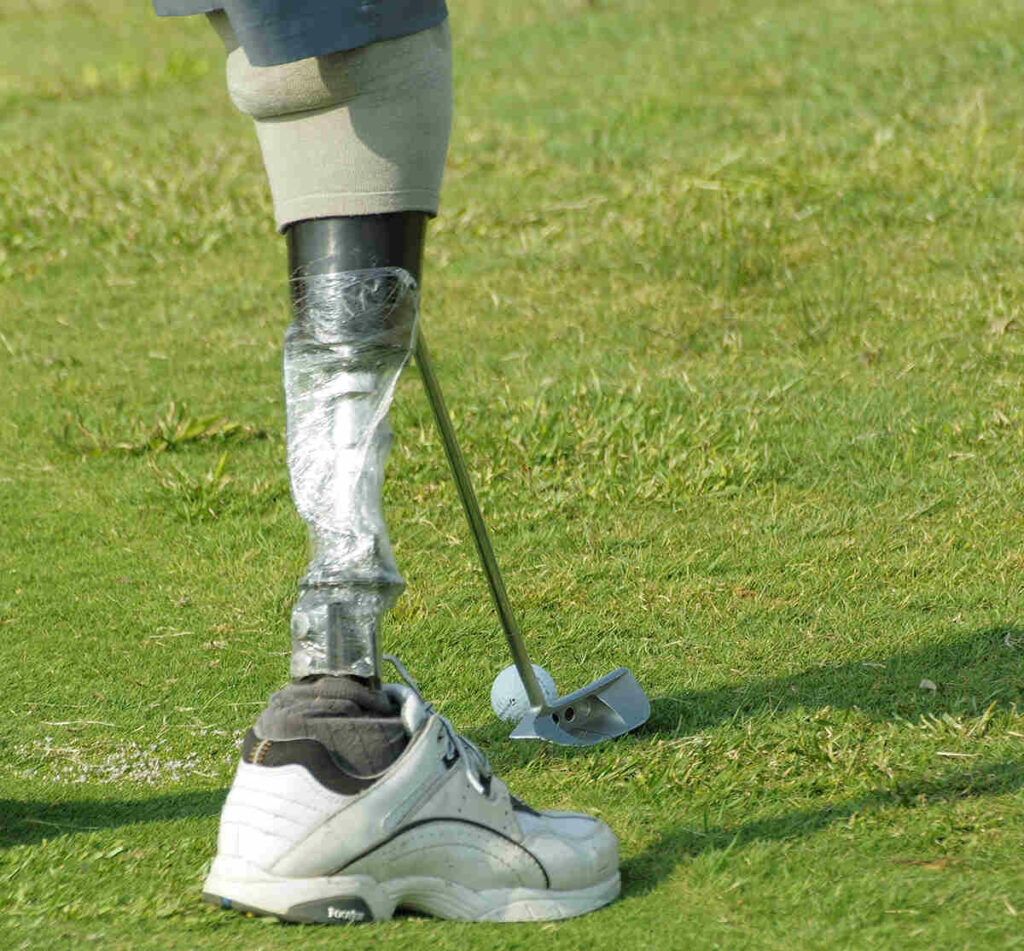
Golf is not just a leisurely pastime for amputees, it’s a sport that opens doors to physical and mental rejuvenation. The journey of an amputee in golf begins with adapting to their new physical realities. Unlike traditional players, amputees rely more on different parts of their bodies – for example, lower-limb amputees use their hips intensively to compensate for the reduced function in their legs. This shift in body mechanics not only influences their swing but also their interaction with the game.
But golf for amputees is far from a solitary journey. The community aspect of the sport is a vital component. Through specialized programs and associations like the National Alliance for Accessible Golf or the Adaptive Golf Foundation of America, amputees find a supportive network. These organizations don’t just provide camaraderie; they offer tailored instruction from certified golf instructors who understand the unique challenges and opportunities that come with playing golf with a prosthetic.
The game itself has evolved to embrace players with disabilities. Adaptive equipment, a game-changer in true sense, allows amputees to enjoy golf with greater ease and comfort. Golf carts with swivel seats and elevating lifts, clubs with special grips for those with limb differences, and even accessories like tee setters and ball retrieval systems – these innovations ensure that the game is accessible to all. Gloves and grip aids, too, play a crucial role, especially for those with limited hand strength or missing fingers.
Coaching techniques for amputee golfers often require thoughtful modifications. It’s about understanding each player’s history with the sport, their physical abilities, and their aspirations. For some, playing without a prosthesis offers a better range of motion, while others might need regular breaks to manage comfort levels with their prosthetics.
The benefits of golf for amputees extend well beyond the physical. The sport is a balm for the mind, offering stress relief and a sense of achievement. It’s not just about hitting the ball; it’s about overcoming personal challenges, fostering resilience, and finding joy in a new normal. Golf provides a platform for social interaction and community building, essential aspects for anyone navigating the complexities of life post-amputation.
Balanced Engagement: Yoga for Amputees
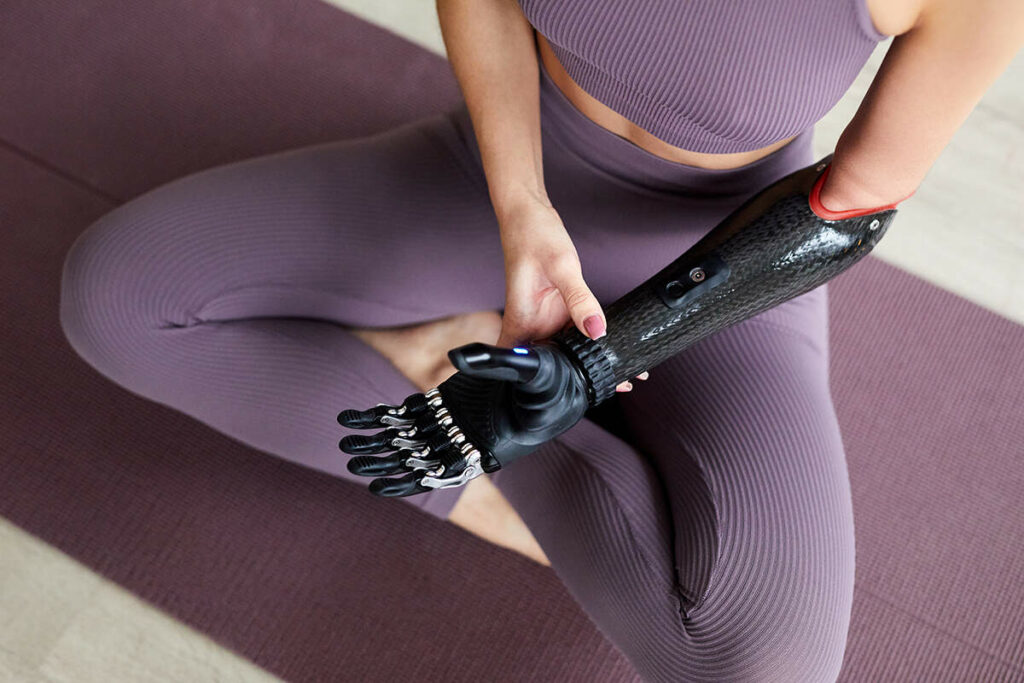
Yoga, being a flexible and engaging exercise form, provides numerous benefits for amputees. With its focus on balance, strength, and flexibility, yoga can be adapted to accommodate the unique needs of each individual, providing a holistic approach to physical and mental well-being.
Yoga Styles and Adaptations
Various yoga styles and adaptations are available, tailored to the needs of amputees. From gentle restorative practices to more dynamic flow styles, each type of yoga can be modified to accommodate the individual’s abilities and limitations. Props, support, and guidance from experienced instructors will ensure a comfortable and beneficial practice.
In addition to traditional yoga styles, there are also specialized yoga programs and classes designed specifically for individuals with disabilities. These classes often focus on adaptive techniques, movement modifications, and the use of props to accommodate each student’s unique needs and abilities.
Finding a Class
To find a yoga class that caters to amputees, start by exploring local studios or community centers that offer specialized programs for individuals with disabilities. Many instructors have experience working with amputees and can provide personalized guidance and modifications to ensure a safe and enjoyable practice.
For even more support, you can check out organizations such as Yoga for Amputees or the Amputee Coalition, which provide resources and information on adaptive yoga programs. These organizations are dedicated to helping amputees enjoy the benefits of yoga and lead a balanced, active lifestyle.
Dynamic Duo: Table Tennis for Hand-Eye Coordination
Table tennis, being a dynamic and engaging sport, can enhance hand-eye coordination for amputees. Whether playing independently or in pairs, table tennis offers a fun and challenging way to sharpen reflexes, mental alertness, and tactical strategy.
Playing Independently or in Pairs
Amputees can enjoy table tennis by playing independently or in pairs, using adapted equipment and techniques to accommodate their disability. Some ways amputees can participate in table tennis include:
- Using specialized paddle grips for better control
- Modifying the table height or position to accommodate their needs
- Using prosthetic limbs or assistive devices to enhance their playing ability
These adaptations and assistive devices, including power assisted bicycles, can help amputees actively participate in the game and enjoy the sport.
In addition to playing for fun, amputees can also compete in table tennis tournaments and events. These competitions provide an opportunity to showcase their skills, meet other players, and enjoy the excitement of friendly rivalry.
Local and International Competition
For those aspiring to elevate their table tennis skills, local and international competitions provide thrilling opportunities for amputees to contest against others and demonstrate their capabilities. The International Table Tennis Federation (ITTF) and other organizations have classification rules and regulations in place to ensure fair competition and create exciting opportunities for amputees to compete.
From local club tournaments to the Paralympic Games, amputees can embrace the thrill of competition and experience the satisfaction of achieving their goals in table tennis. With dedication, practice, and the right support, the possibilities are endless!
Horseback Riding: Freedom and Mobility for Amputees
Horseback riding grants amputees an unparalleled sense of liberty and mobility, enabling them to connect with nature and savor the thrill of riding. With therapeutic riding centers and competitive equestrian opportunities available, amputees can enjoy this wonderful sport to its fullest potential.
Therapeutic Riding Centers
Therapeutic riding centers provide specialized programs for amputees, focusing on building strength, balance, and confidence through horseback riding. These centers offer a safe and supportive environment where amputees can learn to ride and connect with horses in a therapeutic setting.
From improving motor skills to increasing flexibility, therapeutic riding centers can help amputees achieve a wide range of physical and mental benefits. The bond between rider and horse can also provide a unique sense of emotional support, making horseback riding an ideal activity for amputees looking to enhance their overall well-being.
Competing as an Equestrian
For amputees who want to pursue equestrian sports on a competitive level, there are numerous opportunities available. Some of these disciplines include:
- Dressage
- Show jumping
- Eventing
- Para-equestrian sports
Amputee athletes, including below knee amputees, lower limb amputees, and those with cerebral palsy, can showcase their skills and abilities in various disciplines.
With proper training and determination, amputees can excel in equestrian sports and participate in local and international competitions. By connecting with other equestrians and embracing the challenges of the sport, amputees can achieve their dreams and reach new heights in their equestrian pursuits.
All About Adaptability: A Look at Other Sports for Amputees
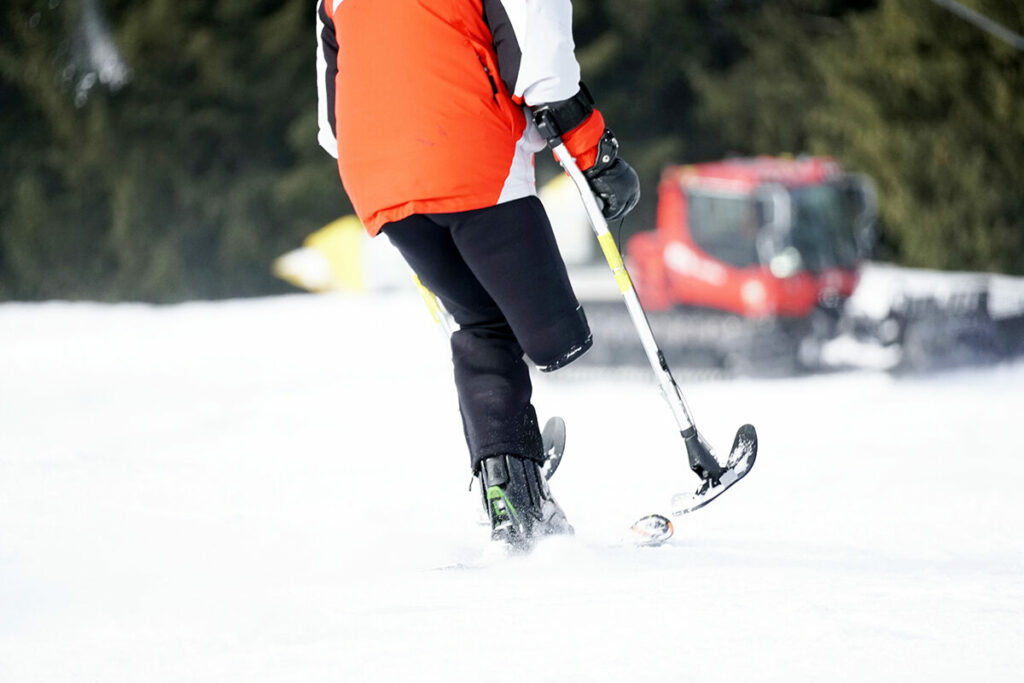
Besides the sports we’ve covered, numerous other disability sports cater to amputees. From cycling and swimming to volleyball and football, the possibilities are endless!
Given the appropriate resources and support, amputees can identify the ideal sport that aligns with their unique needs and abilities.
Recreation Association Resources
Recreation associations and organizations serve as invaluable resources for amputees aspiring to engage in different sports. These groups provide information, support, and connections to help individuals find the perfect fit for their interests and abilities.
Organizations like the Amputee Coalition and LimbPower offer comprehensive sports directories, as well as resources and programs for adaptive sports. By connecting with these organizations, amputees can discover new opportunities to stay active, pursue their passions, and lead a dynamic lifestyle.
From Recreation to Paralympics
The Paralympic Games represent an exhilarating and inspiring platform for amputees with dreams of competing on the global stage. From wheelchair basketball to table tennis, amputees can showcase their skills and abilities in a wide range of sports, competing against others from around the world.
To qualify for the Paralympics, amputees must undergo an athlete evaluation conducted by the International Paralympic Committee (IPC). This assessment determines eligibility and allows amputees to compete at the highest level, representing their country and achieving their dreams.
Frequently Asked Questions
What sports use prosthetics?
Sports such as driving, hockey, skating, in-line skating, paragliding, and horseback riding use prosthetics for lower limb support. Basically all sports is possible to do with prosthetics.
What exercises can I do with an amputated leg?
Exercising with an amputated leg can be done in many ways. Depending on your specific needs, activities such as cycling, swimming, and rowing can help increase strength and mobility. With the right support and guidance, you can find exercises that work for you.
How can adaptive equipment help amputees in sports?
Adaptive equipment can provide amputees with the necessary support and stability they need to participate in sports, making it easier for them to remain active and enjoy their favourite activities.
Are there specialized training programs for amputees in different sports?
Yes, there are specialized training programs for amputees in various sports like wheelchair basketball, scuba diving, and archery.


